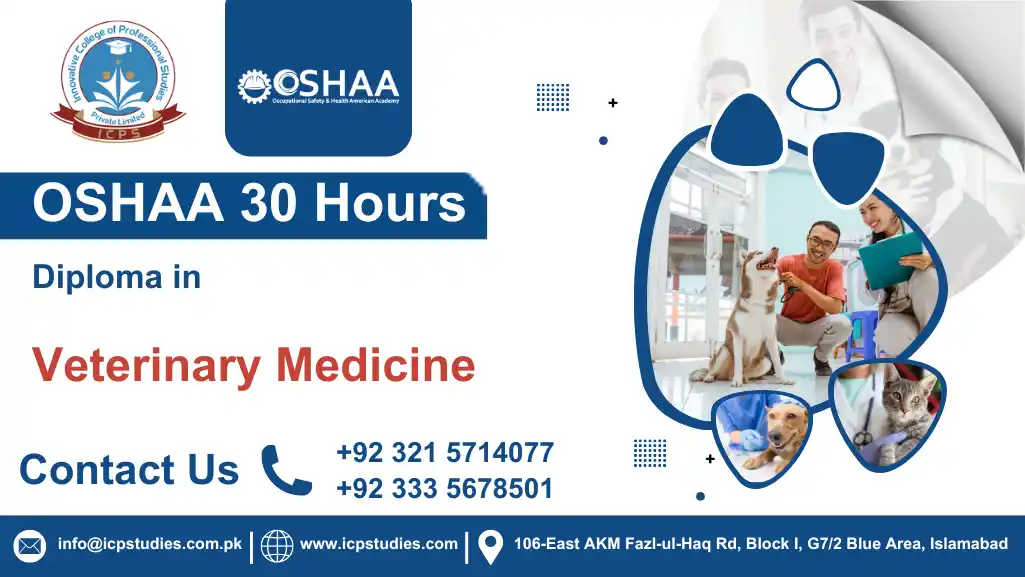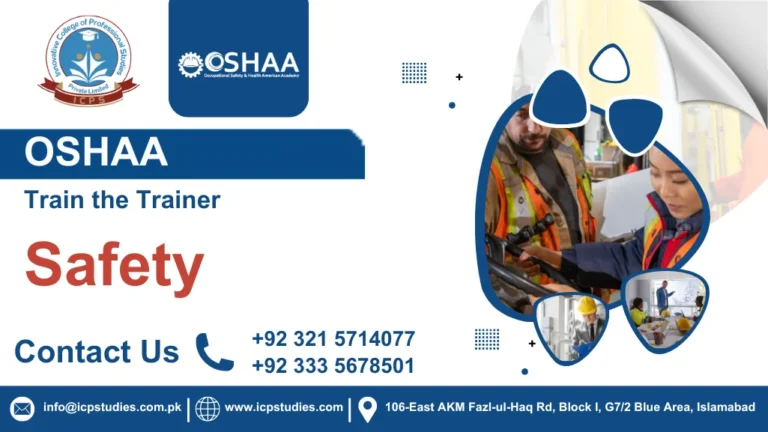The OSHAA 30-Hours Diploma in Veterinary Medicine is a professionally designed short course that equips learners with essential knowledge and skills in animal health and care. This diploma focuses on foundational veterinary practices, disease management, preventive care, and ethical responsibilities within veterinary environments. It is particularly valuable for individuals passionate about animal welfare and seeking to begin or enhance a career in veterinary support roles. Participants will develop a solid understanding of the roles within veterinary practices, including the responsibilities of veterinary assistants, technicians, and support staff. This comprehensive 30-hour diploma programme offers an intensive learning experience that covers the basics of veterinary medicine.
The OSHAA 30-Hours Diploma in Veterinary Medicine structure blends theoretical content with practical insight into animal anatomy, clinical procedures, diagnostics, and treatment protocols. The course is ideal for those interested in entering the animal healthcare industry or those already working in related fields who wish to formalise their knowledge with a recognised credential. There are no strict academic prerequisites for this diploma. However, a basic understanding of biology or life sciences is beneficial. The course is open to students, professionals, and anyone with a keen interest in animal care and veterinary science. The field of veterinary medicine offers a fulfilling and impactful career path, where professionals not only treat animals but also contribute to the overall well-being of public health.
The OSHAA 30-Hours Diploma in Veterinary Medicine offers a compact yet impactful learning experience for individuals looking to enter or progress within the field of animal care. By blending professional standards with accessible training, it opens doors to multiple career pathways in veterinary and animal welfare sectors. Whether you’re considering entering the veterinary field or enhancing your existing knowledge, the OSHAA 30-Hours Diploma in Veterinary Medicine provides a comprehensive introduction to the principles and practices of animal healthcare. This course is ideal for those who are passionate about animals and aspire to make a meaningful difference in their lives.
OSHAA 30-Hours Diploma in Veterinary Medicine
Course Overview
The OSHAA 30-Hours Diploma in Veterinary Medicine is a professionally structured short course designed to introduce learners to the essential principles and practices of veterinary care. This intensive programme covers key areas such as animal anatomy, disease prevention, basic clinical procedures, and emergency first aid, offering a solid foundation in animal healthcare.
The OSHAA 30-Hours Diploma in Veterinary Medicine is Ideal for aspiring veterinary assistants, pet care professionals, and animal lovers, the course combines theoretical knowledge with practical applications. Learners gain insight into real-world veterinary environments, including how to handle animals safely, maintain clinical records, and follow ethical practices in animal treatment.
With a focus on industry-relevant content, the diploma enhances the learner’s ability to support veterinary professionals in clinics, shelters, or mobile care units. Whether you are starting your journey in animal healthcare or looking to upskill, this diploma offers valuable training aligned with international standards.
Delivered over 30 hours, the OSHAA 30-Hours Diploma in Veterinary Medicine is flexible, accessible, and suitable for students from various educational backgrounds. It serves as a strong stepping stone towards more advanced qualifications or direct employment in the veterinary and animal welfare sectors.
Study Units
- Introduction to Veterinary Medicine and Animal Care
- Animal Anatomy and Physiology
- Common Animal Diseases and Conditions
- Veterinary Diagnostics and Medical Procedures
- Pharmacology and Drug Administration in Veterinary Medicine
- Animal Surgery and Post-Operative Care
- Veterinary Nutrition and Dietetics
- Animal Behaviour and Welfare
To ensure learners can successfully engage with the course content and benefit from the training, the following entry requirements apply:
Minimum Age:
Applicants must be at least 16 years of age at the time of enrolment.
Educational Background:
A minimum of secondary school education is recommended. While no specific academic qualifications are required, a basic understanding of science or biology will be advantageous.
Work Experience:
No prior work experience in the veterinary or animal care sector is necessary. This course is suitable for both beginners and individuals seeking to formalise their existing knowledge.
Language Proficiency:
As the course is delivered in English, learners should have a basic to intermediate level of English reading, writing, and comprehension skills to follow instructions, understand course materials, and complete assessments effectively.
This course is designed for a wide range of individuals who are passionate about animal health and welfare, whether they are starting their career or seeking to enhance their skills in the field. Intended learners include:
- Individuals aspiring to work as veterinary assistants, technicians, or support staff
- Students interested in pursuing further education in veterinary science or animal care
- Pet care professionals, groomers, or animal shelter staff seeking formal training
- Pet owners who wish to improve their knowledge of animal health and first aid
- Career changers looking to enter the veterinary or animal healthcare industry
- Volunteers or workers at animal rescue centres or farms seeking practical veterinary knowledge
This course provides a strong foundation and valuable practical insight for anyone committed to supporting animal wellbeing in professional or personal capacities.
Learning Outcomes
Introduction to Veterinary Medicine and Animal Care
- Understand the scope and importance of veterinary medicine
- Identify key roles and responsibilities in veterinary care
- Recognise ethical and legal considerations in animal treatment
Animal Anatomy and Physiology
- Describe the major anatomical systems of common animals
- Explain basic physiological functions and their relevance to health
- Identify signs of normal and abnormal physical conditions
Common Animal Diseases and Conditions
- Recognise symptoms of common infectious and non-infectious diseases
- Understand disease transmission, prevention, and control methods
- Apply basic protocols for isolation and infection management
Veterinary Diagnostics and Medical Procedures
- Understand diagnostic tools and procedures used in veterinary settings
- Assist in conducting physical exams and collecting samples
- Interpret basic diagnostic results to support treatment plans
Pharmacology and Drug Administration in Veterinary Medicine
- Understand the types and uses of common veterinary drugs
- Learn methods of safe drug storage, dosage calculation, and administration
- Recognise adverse drug reactions and reporting procedures
Animal Surgery and Post-Operative Care
- Identify common surgical procedures and required preparations
- Understand the basics of aseptic techniques and surgical assistance
- Provide appropriate post-operative monitoring and wound care
Veterinary Nutrition and Dietetics
- Understand the nutritional needs of different animal species
- Evaluate and plan appropriate diets based on health conditions
- Identify signs of nutritional deficiencies and imbalances
Animal Behaviour and Welfare
- Observe and interpret animal behaviour and stress signals
- Apply techniques to promote animal comfort and reduce distress
- Understand welfare standards and implement humane handling practices
FAQs OSHAA 30-Hours Diploma in Veterinary Medicine







